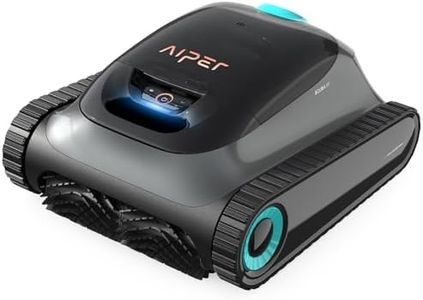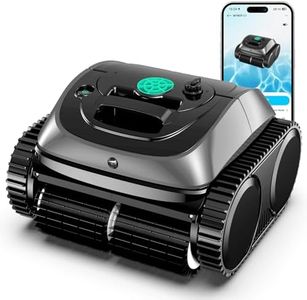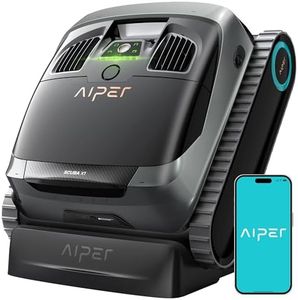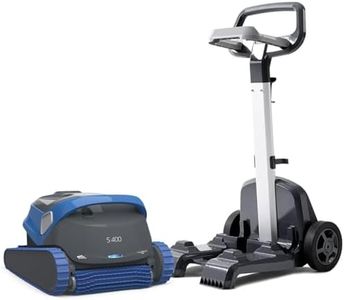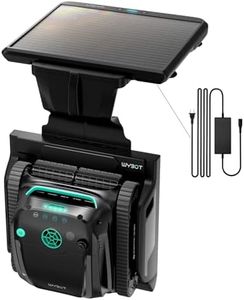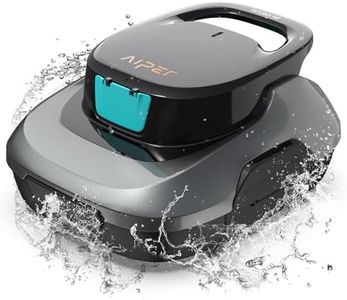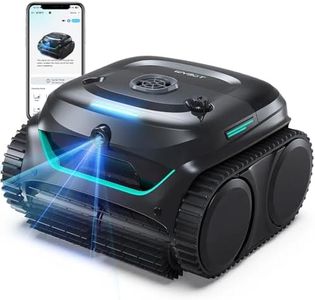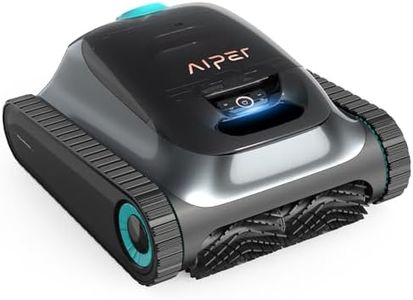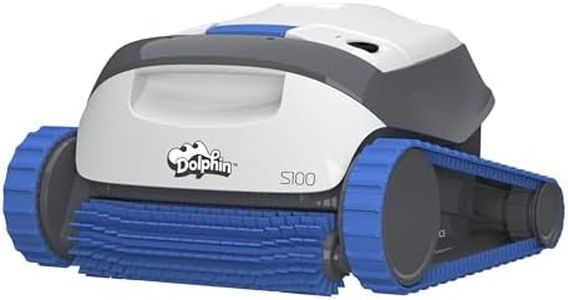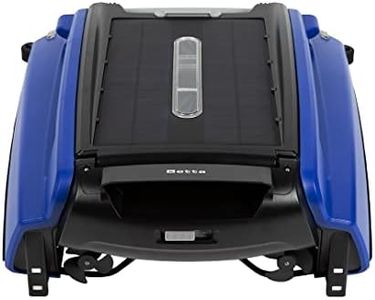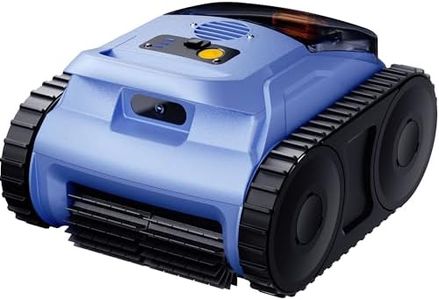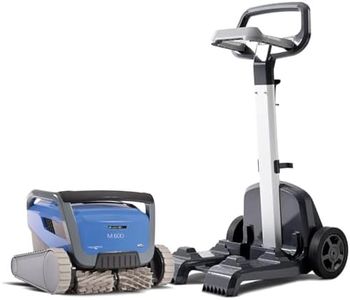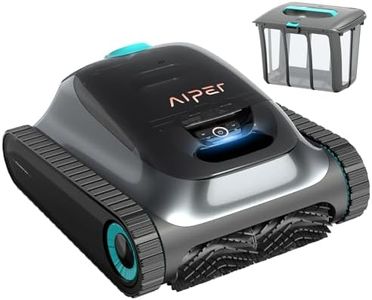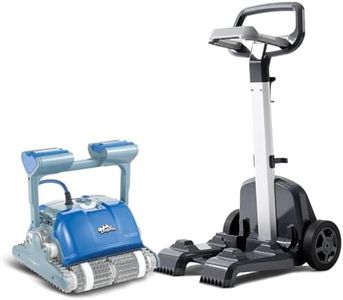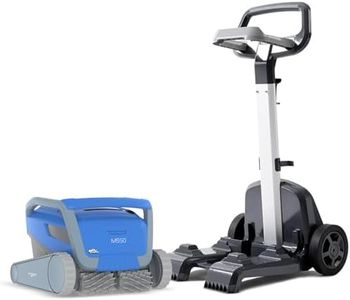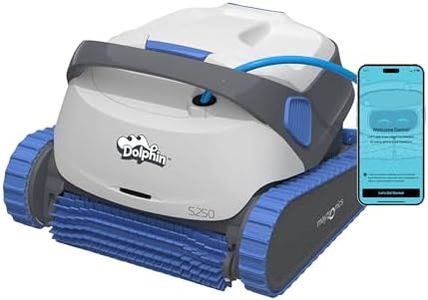We Use CookiesWe use cookies to enhance the security, performance,
functionality and for analytical and promotional activities. By continuing to browse this site you
are agreeing to our privacy policy
10 Best Robotic Pool Cleaners
From leading brands and best sellers available on the web.Buying Guide for the Best Robotic Pool Cleaners
Choosing a robotic pool cleaner can make maintaining your pool much easier, letting you enjoy clean water without a lot of manual work. When selecting a model, it's important to focus on your pool’s specific requirements and your expectations from the cleaner. Pay attention to factors like pool size, debris type, and cleaning patterns. Understanding key features and how they relate to your situation will help you select a robotic cleaner that gets the job done efficiently and without hassle.Pool Size CompatibilityPool size compatibility refers to the maximum dimensions or square footage a robotic cleaner is designed to handle. This is important because cleaners are built with cable lengths, power, and cleaning cycles suited for certain pool sizes. There are generally options for small, medium, and large pools. If you have a small above-ground pool, a smaller unit will do the job efficiently. For larger in-ground pools, look for models rated for bigger areas. Matching your pool size to the cleaner ensures it won’t miss spots or struggle due to limited reach.
Cleaning Coverage (Floor, Walls, Waterline)Cleaning coverage describes which surfaces the robotic pool cleaner can clean: just the floor, or also the walls and waterline. Floor-only models are basic but effective for minimal maintenance. Models that handle walls and the waterline offer more thorough cleaning, important if you struggle with dirt buildup in those areas. Think about where dirt collects in your pool; if you often see residue up the walls or at the water’s edge, a multi-surface cleaner would be a better fit for you.
Filtration System and Debris CapacityThe filtration system and debris capacity determine the types and amounts of dirt the cleaner can handle before needing to be emptied. Fine filters are best for silt, sand, and small particles, while larger baskets or cartridges catch leaves and bigger debris. Consider what accumulates most in your pool. If you have trees nearby, a larger debris capacity is essential. If you deal more with dust and pollen, look for finer filtration. Pick the combination that matches your circumstances to avoid frequent emptying and ensure a clean pool.
Cycle Time and Cleaning ProgramsCycle time is how long the cleaner runs in a single session, and cleaning programs are preset routines for different cleaning intensities or pool areas. Short cycles are great for touch-ups or light dirt, while longer cycles are necessary for deep cleaning. If you want flexibility—say, just a quick clean before guests arrive—choose a model with multiple cycle and program options. Decide how you want to schedule cleaning and match it to your lifestyle for convenience.
Ease of Use and ControlsEase of use includes setup, controls, and maintenance, which directly affect your experience. Some robotic cleaners feature simple plug-and-play operation, while others offer remote controls, programmable scheduling, or even app connectivity. If you prefer simplicity, a basic model may be best. If you like to manage your cleaner from your phone or set it to run while you’re away, look for smart features. Consider what fits your daily routine for a hassle-free ownership experience.
Mobility and NavigationMobility and navigation speak to how the cleaner moves around the pool and avoids obstacles. Some cleaners use random movements, while others map the pool for optimized cleaning paths. More advanced navigation tends to reduce missed areas and repeat passes. If your pool is a simple shape, basic navigation may suffice. For irregular or large pools, enhanced navigation ensures thorough cleaning. Think about your pool’s layout and choose a navigation system that will reliably cover all areas.
Weight and PortabilityWeight and portability refer to how easy it is to lift, remove, and store the robotic cleaner. Heavier units may offer more features or larger debris bins but can be challenging to handle if you need to move them frequently. Lightweight cleaners are easier to lift but may be less robust. If you plan to remove and store the cleaner regularly, or if lifting heavy objects is difficult, opt for a lighter model with good handles or a caddy for convenience.
